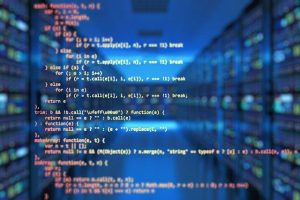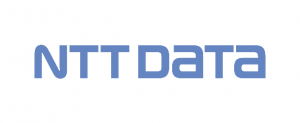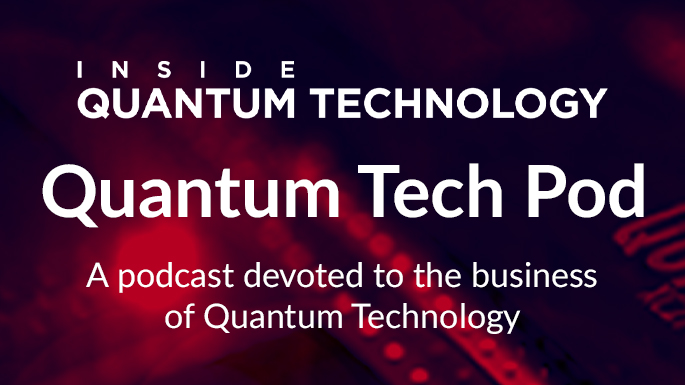Quantum News Briefs July 24: Quantum sensing technology applied to sensing cables will increase speed & reliability of data transmission; Harnessing Quantum Vacuum Zero Point Energy will revolutionize energy consumption; NTT DATA demonstrates quantum computing’s potential in genome assembly and disease treatment + MORE

Quantum News Briefs July 24:
Quantum sensing technology applied to sensing cables will increase speed & reliability of data transmission
 Sensing cable technology, at its core, involves the use of fiber optic cables that can detect and measure changes in temperature, pressure, and other physical parameters. These cables are embedded with sensors that can transmit data at lightning speed, making them an integral part of our telecommunications infrastructure. Quantum News Briefs summarizes the July 22 Fagen wasanni article.
Sensing cable technology, at its core, involves the use of fiber optic cables that can detect and measure changes in temperature, pressure, and other physical parameters. These cables are embedded with sensors that can transmit data at lightning speed, making them an integral part of our telecommunications infrastructure. Quantum News Briefs summarizes the July 22 Fagen wasanni article.
The introduction of quantum sensing technology is a groundbreaking advancement. Quantum sensors use the principles of quantum mechanics to measure physical quantities with unprecedented accuracy. When applied to sensing cables, this technology can significantly enhance the speed and reliability of data transmission.
Quantum sensing technology can also increase the security of telecommunications networks. Quantum sensors can detect any attempt to intercept or tamper with the data being transmitted, making it virtually impossible for hackers to breach the network. This is a significant advantage in an era where cyber threats are becoming increasingly sophisticated and prevalent.
The impact of these advancements on the telecommunications industry cannot be overstated. With the global demand for data expected to increase exponentially in the coming years, the need for reliable, efficient, and secure telecommunications networks is more critical than ever.
Sensing cable technology is poised to meet this demand. By providing real-time monitoring and fault detection, it can ensure the uninterrupted flow of data. By enhancing the speed and reliability of data transmission, it can cater to the growing need for high-speed internet and other data services. And by increasing the security of the network, it can protect against cyber threats and ensure the privacy and integrity of data.
However, the adoption of these advanced technologies is not without challenges. The high cost of implementation and the need for specialized skills and training are significant barriers. There’s also the issue of compatibility with existing infrastructure, which may require substantial upgrades or replacements. Click here to read the article in-entirety.
Harnessing Quantum Vacuum Zero Point Energy will revolutionize energy consumption
 The world of internet technologies is on the brink of a revolutionary shift in energy consumption, thanks to the emerging field of Quantum Vacuum Zero Point Energy (QVZPE). Quantum News Briefs summarizes July 23 article from EnergyPortal.eu
The world of internet technologies is on the brink of a revolutionary shift in energy consumption, thanks to the emerging field of Quantum Vacuum Zero Point Energy (QVZPE). Quantum News Briefs summarizes July 23 article from EnergyPortal.eu
Quantum Vacuum Zero Point Energy, a concept rooted in quantum physics, refers to the lowest possible energy that a quantum mechanical physical system may possess. Contrary to traditional understanding, even in its ground state, this system does not have zero energy. Instead, it exhibits fluctuations that give rise to particles and antiparticles, thus creating a sea of energy even in ’empty’ space. This energy, if harnessed, could provide an almost infinite source of power.
Currently, data centers, which are the backbone of the internet, consume a significant amount of energy. According to DOE, data centers account for about 2% of the total electricity use in the United States. With the introduction of QVZPE, we could potentially power these data centers with minimal impact on our energy resources.
The transition to QVZPE could significantly reduce the carbon footprint of internet technologies. Given that data centers are projected to account for 3.2% of total worldwide carbon emissions by 2025, the potential for QVZPE to mitigate this impact is enormous.
The journey to harness Quantum Vacuum Zero Point Energy for internet technologies is undoubtedly challenging. It requires not only scientific breakthroughs but also a paradigm shift in how we perceive and utilize energy. However, the potential rewards – a more sustainable, resilient, and efficient digital infrastructure – make this endeavor worth pursuing. Click here to read article in-entirety.
NTT DATA demonstrates quantum computing’s potential in genome assembly and disease treatment
 NTT DATA announced on July 20 the end of a project that used quantum computing to optimise genome assembly processes. This is a milestone in the use of this technology in the Healthcare and Life Sciences industries. Quantum News Briefs summarizes the announcement.
NTT DATA announced on July 20 the end of a project that used quantum computing to optimise genome assembly processes. This is a milestone in the use of this technology in the Healthcare and Life Sciences industries. Quantum News Briefs summarizes the announcement.
The project explored the capability and feasibility of using quantum computing for genome assembly by comparing quantum and non-quantum computing approaches. To do so, NTT DATA tackled a genome assembly problem in an environment that simulated real-world conditions. The conclusion of these tests was that scientists can identify genetic variations associated with certain illnesses and conditions through someone’s genomic sequencing and genome assembly.
This information can then be used to develop new treatments and therapies to target the underlying genetic causes of the disease.
The objective of the collaboration between NTT DATA Spain, NTT DATA Brazil and NTT’s Center for Quantum Innovation has been to implement and compare classical (or non-quantum) – and quantum computing algorithms based on two approaches.
Classical approach: NTT DATA used the Gurobi product – one of the most powerful packages for combinatorial optimization problems – and the Simulated Annealing algorithm.
Quantum approach: NTT DATA used Quantum Annealing technology with superconducting qubits from D-Wave. NTT Research’s CIM (Coherent Ising Machine) then simulated the technology. The comparison was based on the measurement of computational efficiency, accuracy, and scalability indicators.
Although the results derived from the proof-of-concept show that purely quantum approaches still present difficulties in tackling large problems, as the computational capacity increases, a substantial improvement in processing time can be observed, depending on the problem size, from exponential in traditional systems to almost linear in quantum systems.
David Montal, head of Pharma & Life Sciences, and Jose Aznar, project lead and head of Health Innovation at NTT DATA EMEAL, explained: “This concept test is the first of its kind in using quantum technologies in the Healthcare industry. Although the use of quantum technologies is still in its early days, their applicability in the medium and long term will be decisive in fields such as genomics, digital image processing and real-time health data analytics where efficiency and processing capacity is key.” Click here to read the complete announcement.
Extreme measuring device can bring quantum technology to your smartphone
 University of Copenhagen researchers have invented a “quantum drum” that can measure pressure, a gas leak, heat, magnetism and a host of other things with extreme precision. It can even scan the shape of a single virus. The invention has now been adapted to work at room temperature and may be finding its way into our phones, as reported by a July 13 article on Phys.org summarized here by Quantum News Briefs.
University of Copenhagen researchers have invented a “quantum drum” that can measure pressure, a gas leak, heat, magnetism and a host of other things with extreme precision. It can even scan the shape of a single virus. The invention has now been adapted to work at room temperature and may be finding its way into our phones, as reported by a July 13 article on Phys.org summarized here by Quantum News Briefs.
The heart of the apparatus could be called a “quantum drum”: It is a thin membrane that vibrates like a drum skin, but with so small an amplitude that the laws of quantum physics are needed to describe what’s happening. In other words, it’s vibrating really fast. This means the drum can be used as an ultra-precise measuring device—a quantum supersensor.
“The sensor is so sensitive that, in principle, we could measure whether a single person is hopping from one leg to the other in Paris. We would be able to capture it here, in our Copenhagen basement, from thousands of kilometers away. But, because it would require them to jump at 1.4 million vibrations per second, the example is best regarded as a thought experiment,” laughs Professor Albert Schliesser from the Niels Bohr Institute, who heads the team behind the quantum sensor.
Thought experiments aside, the sensor is very real and has many possible uses. By reading changes in the vibrations with which the quantum drum moves, researchers can measure a wide variety of influences with extreme precision.
“For example, a change in temperature or the presence of a gas will directly affect the way the drum vibrates, and it’s the same when we place a virus on the drum. A laser allows us to read the result accurately. But this is just the beginning,” explains Professor Albert Schliesser. “By putting small piece of metal, or a tiny magnet on the membrane, we can also detect electric and magnetic fields with extreme precision,” he says.
The researchers have now proven that they can combine a kind of shock absorber of their own invention and a special laser-cooling technique to achieve the extreme precision even at room temperature, that is, without helium cooling.
This means that the sensor can now be made small enough to be put in a chip. “It can be a very small setup. For example, the sensor could sit inside a vacuum system in a semiconductor processing plant and keep an eye on temperature and gas leaks,” says the researcher. In the future, it may even be possible to integrate the sensor in a consumer device like a smart phone. Click here to read Phys.org article in-entirety.
Sandra K. Helsel, Ph.D. has been researching and reporting on frontier technologies since 1990. She has her Ph.D. from the University of Arizona.



















